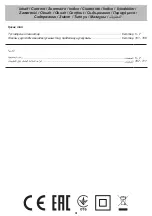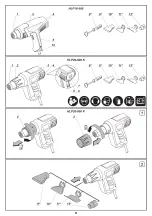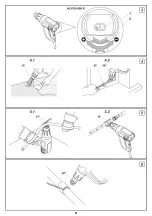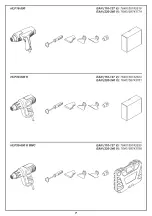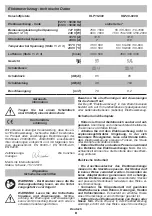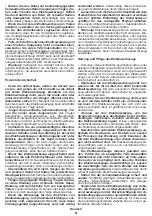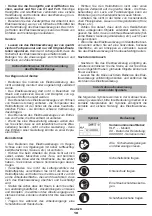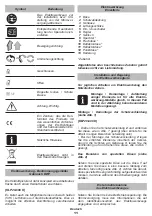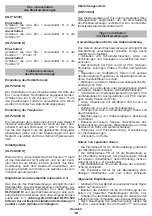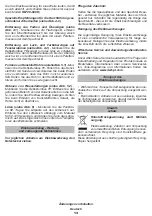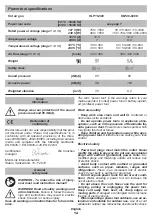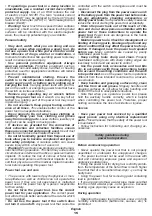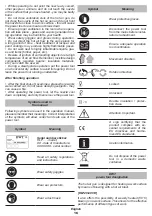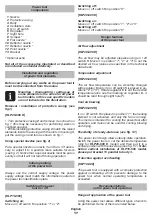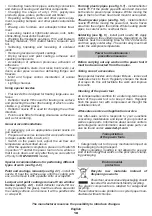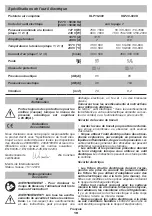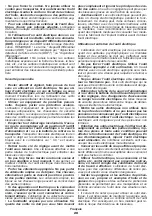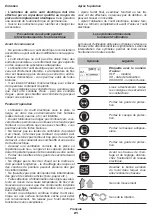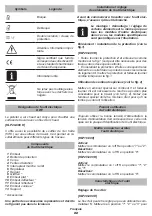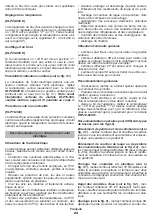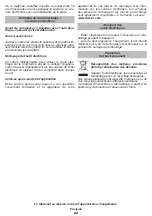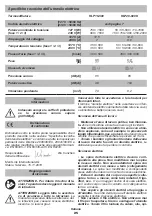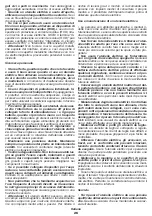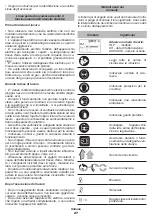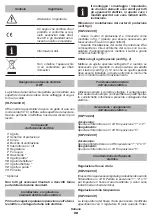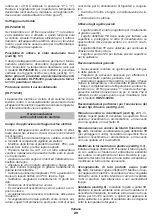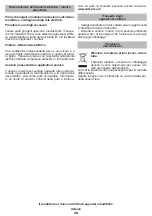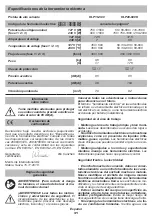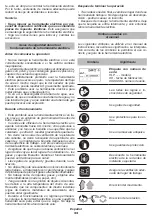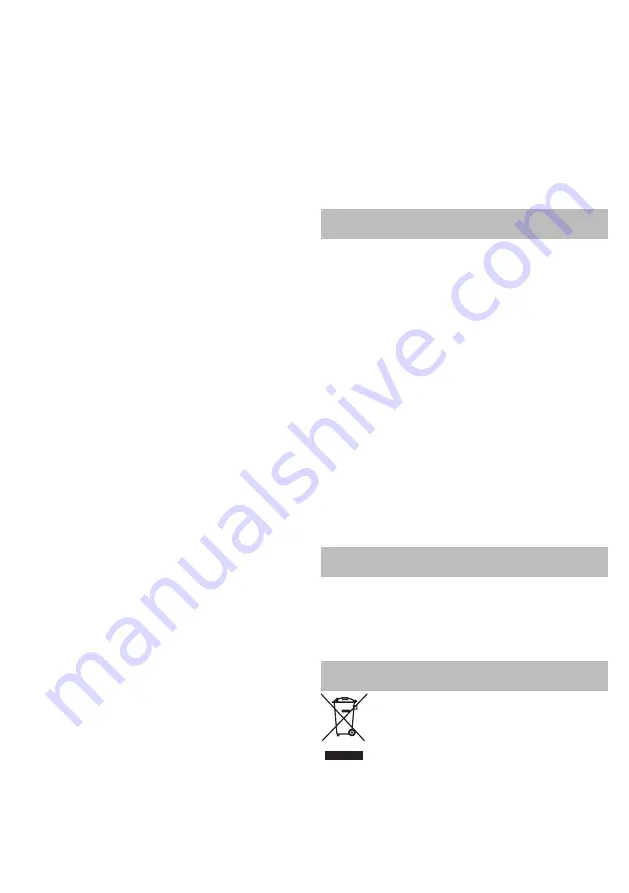
18
English
•
Contracting heat shrink pipes, soldering connectors
and clamps of sealing and electrical components�
•
Changing the shape of acryl, PVC, polystyrene
products, pipes, plates, profiles and wet timber.
•
Repairing surfboards, skis and other sports equip-
ment, repairing bumpers and other plastic automobile
parts�
•
Waxing skis, furniture, and antiseptic timber treat-
ment�
•
Loosening rusted or tight metal screws, nuts, bolts,
shrink-fitting, heat shrink treatment.
•
Welding thermoplastic polymers, PVC and linoleum
flooring materials, PVC coated fabrics, tarpaulin and
foil�
•
Soldering, tinplating and loosening of soldered
joints�
•
Removing lacquer and paint coatings�
•
Drying lacquer and paint coatings, adhesive and
spackling compounds�
•
Acceleration of adhesion processes, activation of
adhesives�
•
Thawing ladders, stairs, door locks, boot covers, car
doors, water pipes as well as defrosting fridges and
freezers�
•
Mold and fungus control, disinfection of animal
housing�
•
Lighting charcoal�
Using special nozzles
•
Flat nozzle
9
is designed for treating large-area sur-
faces�
• Deflector nozzle
10
is used for treating one surface
and protecting the other (the heating of which is unde-
sirable, e�g� window glass)�
• Reflector nozzle
11
is used for changing the air flow
direction�
•
Point nozzle
12
is for treating small-area surfaces as
well as for soldering�
General recommendations
•
If necessary, put an appropriate special nozzle on
gun nozzle
1
�
•
Prepare accessories required for work performance
(scraper, palette knife, brush, etc�)�
• Switch on the power tool, adjust the air flow and
temperature as described above�
•
After the operation completion, place on / off switch
5
in position "1" and let the power tool run for a while so
that it cools down, and only after that you can switch it
off (only for
HLP20-600 K
model)�
Special recommendations for performing different
types of work (see fig. 4-6)
Paint and coatings removal (see fig. 4.1)
- install flat
nozzle
9
, heat the surface area until the coating soft-
ens, and remove it with a palette knife or scraper
8
�
Lacquer and paint coatings removal from window
frames (see fig. 4.2)
- install deflector nozzle
10
cor-
rectly (to protect the glass), heat the surface area until
the coating softens, and remove it with a palette knife
or scraper
8
�
Forming plastic pipes (see fig. 5.1)
- install reflector
nozzle
11
� Fill the plastic pipe with sand and close it at
both ends to prevent pipe collapse� While moving the
pipe in the hot air flow, heat it and mould it as required.
Thawing water pipes (see fig. 5.2)
- install reflector
nozzle
11
� While moving the power tool, heat a frozen
area from the edge to the middle� While heating plastic
pipes, be careful not to overheat them�
Soldering (see fig. 6)
- install point nozzle
12
� Apply
solder paste on the soldering area� Depending on the
material, heat the soldering area for 50-120 seconds,
and then apply solder alloy� The solder alloy must melt
under the workpiece temperature�
Power tool maintenance /
preventive measures
Before carrying out any works on the power tool it
must be disconnected from the mains.
Taking care of accessories
Keep special nozzles and scraper
8
clean - remove all
materials stuck to them� Regularly sharpen the blade
of scraper
8
- this will facilitate the work and improve
its results�
Cleaning of the power tool
An indispensable condition for a safe long-term exploi-
tation of the power tool is to keep it clean� Regularly
flush the power tool with compressed air thought the
ventilation slots
4
�
After-sales service and application service
Our after-sales service responds to your questions
concerning maintenance and repair of your product as
well as spare parts� Information about service centers,
parts diagrams and information about spare parts can
also be found under:
www.dwt-pt.com
�
•
Transportation
of the power tools
Categorically not to drop any mechanical impact on
the packaging during transport�
•
When unloading / loading is not allowed to use any
kind of technology that works on the principle of clamp-
ing packaging�
Environmental
protection
Recycle raw materials instead of
disposing as waste.
Power tool, accessories and packaging should
be sorted for environment-friendly recycling�
The plastic components are labelled for categorized
recycling�
These instructions are printed on recycled paper man-
ufactured without chlorine�
The manufacturer reserves the possibility to introduce changes.
Summary of Contents for HLP16-500
Page 1: ......
Page 5: ...5 ...
Page 6: ...6 ...
Page 7: ...7 ...
Page 107: ...107 ...
Page 108: ...108 ...
Page 109: ...109 ...
Page 110: ...110 ...
Page 111: ...111 ...
Page 112: ...112 ...
Page 113: ...113 ...
Page 114: ...114 ...
Page 115: ...115 ...
Page 116: ......

